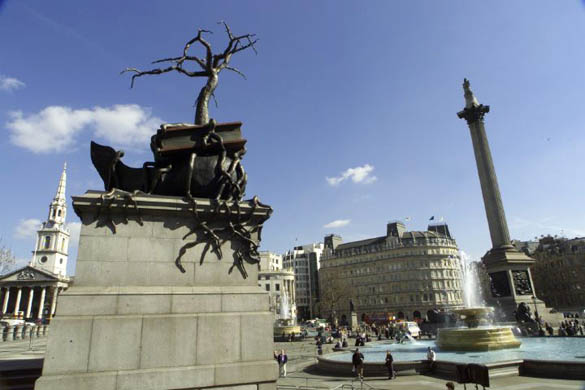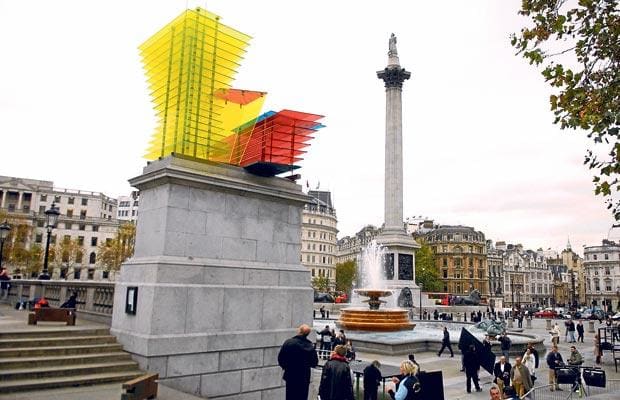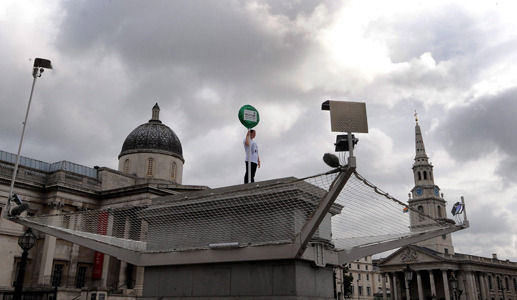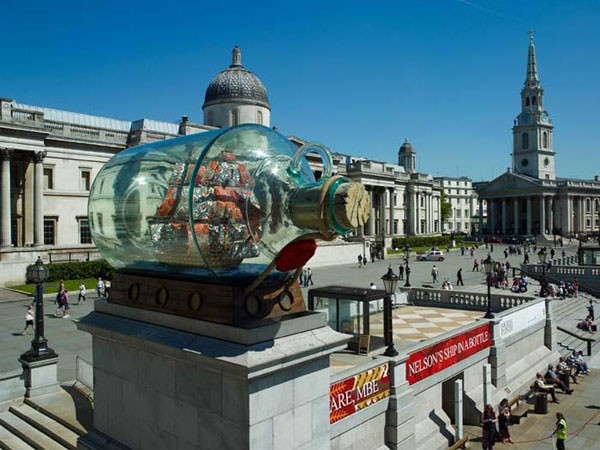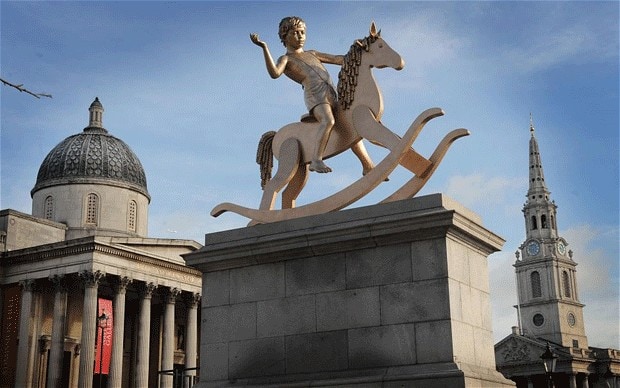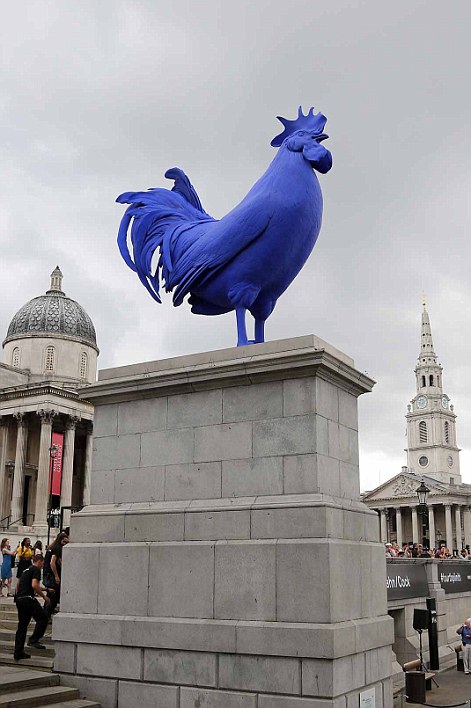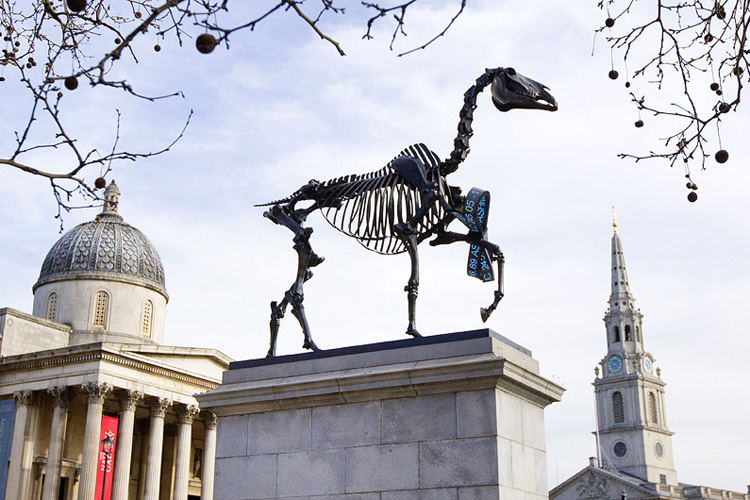Difference between revisions of "Significance of London's Fourth Plinth"
From Londonhua WIKI
(→Fourth Plinth Chronological Gallery) |
(→Fourth Plinth Chronological Gallery) |
||
| Line 117: | Line 117: | ||
Image:Regardless of History.jpg|''Bill Woodrow's Regardless of History''<ref>T. (2011, January 21). The Fourth Plinth. Retrieved June 20, 2017, from http://tentends.tumblr.com/post/2860296129/the-fourth-plinth</ref> | Image:Regardless of History.jpg|''Bill Woodrow's Regardless of History''<ref>T. (2011, January 21). The Fourth Plinth. Retrieved June 20, 2017, from http://tentends.tumblr.com/post/2860296129/the-fourth-plinth</ref> | ||
Image:Monument.jpg|''Rachel Whiteread's Monument''<ref>(n.d.). Retrieved June 20, 2017, from http://www.fineart.ac.uk/works.php?imageid=bt0004</ref> | Image:Monument.jpg|''Rachel Whiteread's Monument''<ref>(n.d.). Retrieved June 20, 2017, from http://www.fineart.ac.uk/works.php?imageid=bt0004</ref> | ||
| − | |||
Image:Alison Lapper Pregnant.jpg|''Marc Quinn's Alison Lapper Pregnant'' <ref>Alison Lapper 20002012. (2012). Retrieved June 20, 2017, from http://marcquinn.com/artworks/alison-lapper</ref> | Image:Alison Lapper Pregnant.jpg|''Marc Quinn's Alison Lapper Pregnant'' <ref>Alison Lapper 20002012. (2012). Retrieved June 20, 2017, from http://marcquinn.com/artworks/alison-lapper</ref> | ||
Image:Thomas-schutte-Model-for-a-Hotel-2007.jpg|''Thomas Schütte's Hotel for the Birds''<ref>Trafalgar Square's Fourth Plinth. (2009, February 26). Retrieved June 20, 2017, from http://www.telegraph.co.uk/culture/culturepicturegalleries/4838785/Trafalgar-Squares-Fourth-Plinth.html?image=4</ref> | Image:Thomas-schutte-Model-for-a-Hotel-2007.jpg|''Thomas Schütte's Hotel for the Birds''<ref>Trafalgar Square's Fourth Plinth. (2009, February 26). Retrieved June 20, 2017, from http://www.telegraph.co.uk/culture/culturepicturegalleries/4838785/Trafalgar-Squares-Fourth-Plinth.html?image=4</ref> | ||
Revision as of 08:10, 21 June 2017
Significance of London's Fourth Plinth
by Cole Fawcett
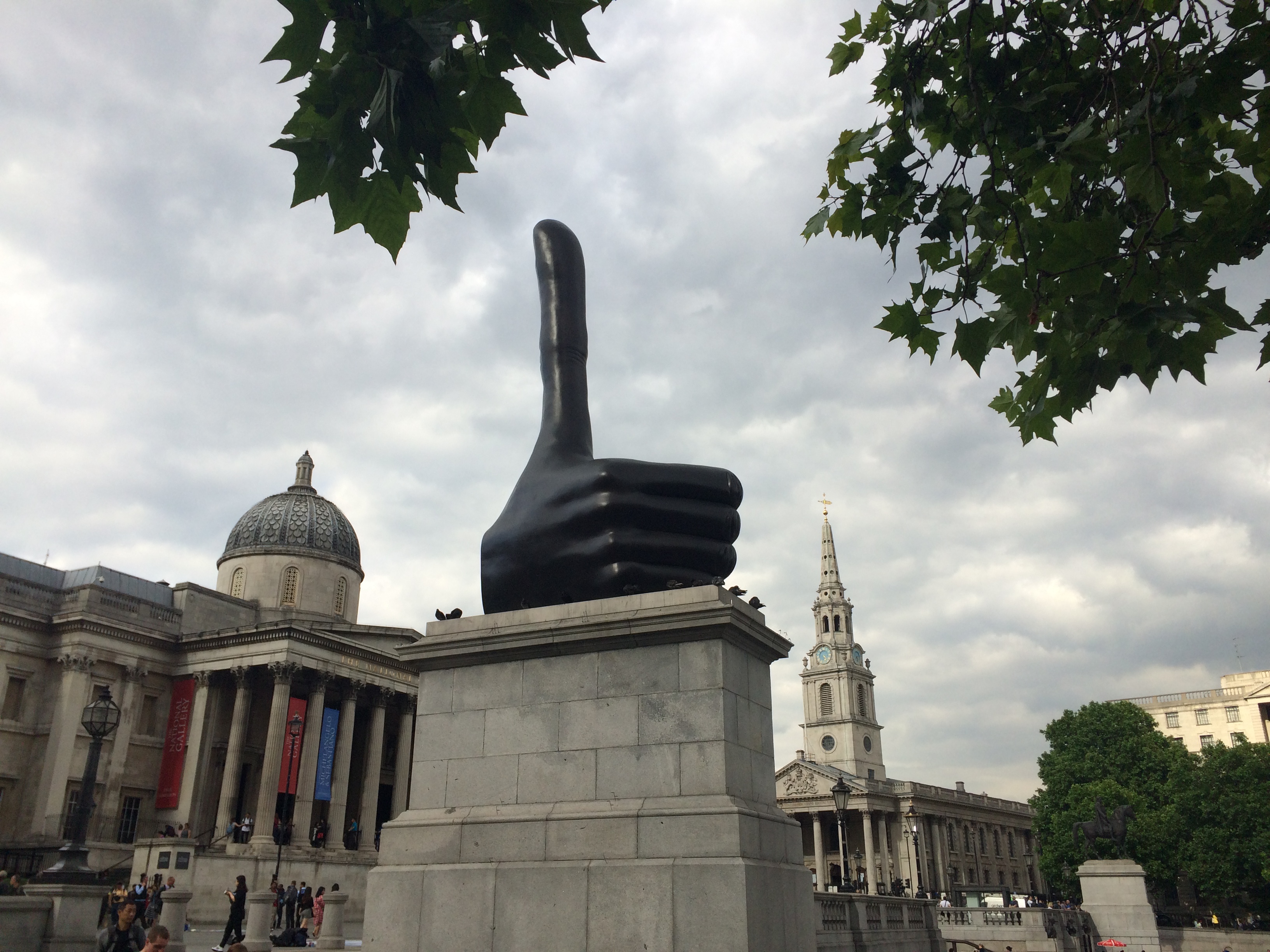 The Fourth Plinth, displaying its most recent commission, Really Good by David Shrigley |
Contents
Abstract
This Milestone takes a close analyzation of the public sculpture within the London scrutinizing it under the lens of historical significance and public use. In an effort to achieve this, the background consists of research done on how a variety of 7 or so sculptures came be commissioned on public land and use to the present. A inspired gallery depicting how these structures coexist and commingle with their environment will serve as the deliverable component of this milestone. Overall, this project attempts to shed light on the real effect public sculpture affects the city and people of London beyond a flashy tourist pull.
Introduction
Cover what the project is and who cares in the first two sentences. Then cover what others have done like it, how your project is different. Discuss the extent to which your strategy for completing this project was new to you, or an extension of previous HUA experiences.
As you continue to think about your project milestones, reread the "Goals" narrative on defining project milestones from the HU2900 syllabus. Remember: the idea is to have equip your milestone with a really solid background and then some sort of "thing that you do". You'll need to add in some narrative to describe why you did the "thing that you did", which you'd probably want to do anyway. You can make it easy for your advisors to give you a high grade by ensuring that your project milestone work reflects careful, considerate, and comprehensive thought and effort in terms of your background review, and insightful, cumulative, and methodical approaches toward the creative components of your project milestone deliverables.
Section 1: Background
History of Trafalgar Square
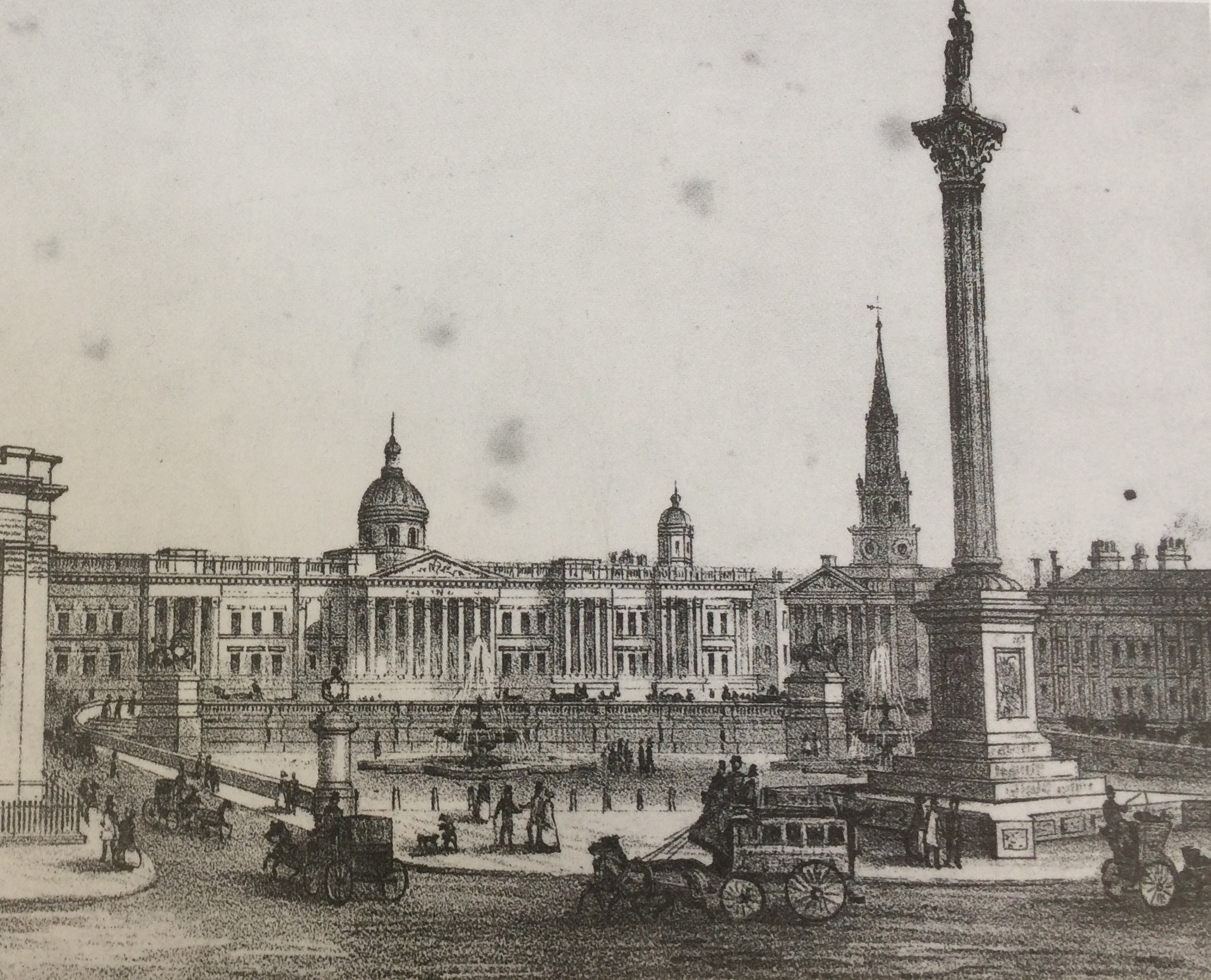
Trafalgar Square stands in a unique position as a public space in London. The squares signature monuments of George IV on horseback and Nelson's column exude an expression of the country's social and political aspirations. Trafalgar Square intentions was to inspire nationalistic fervor and command international reverence. The square was originally intended as a showpiece, a place to look at and show off to local and foreign eyes alike. Places like trafalgar square, places that serve as their own countries signs of pride, all embody the attitudes and morals of the ruling class, deciding what of and how history is remembered. This interplay between the aristocratic intention and public use would help shape and define Trafalgar square as a place of heated debate, over time fostering a microcosm of the nations political, economic, and ethical issues.
The infighting event for the erection of Trafalgar Square occurred on the 21st of October, 1805; the last sea battle of Britain's war with France, appropriately known as The Battle of Trafalgar. Britain's victory established the country as the number one global sea power, sowing the seeds of the establishment of British Empire over the next 100 years. With the death of Admiral Horatio Nelson at such a fortuitous battle, desire for monument to celebrate the battle's Admiral grew. Despite this eagerness, it would take 35 years after Nelson's death for the land outside the south entrance of the National Gallery, just north of the center of London at Charing Cross, to be designated as Trafalgar Square and decided on as the spot for Nelson's honorary "national monument." The actual construction of the square itself took place during 1842 and 1843, running into significantly less problems than the planning and decision-making behind Nelson's monument.[2] Besides Trafalgar Square's signature column, four plinths punctuate each corner of the square. The first, a bronze statue commemorating the late George IV, was installed on the squares eastern plinth in 1844. The two plinths on the south side of Trafalgar Square came in the late 19th century, funded by public subscriptions to the square, both depicting famous English war heroes. The south-west plinth was erected first in 1855-6 adorned by a bronze statue of General Sir Charles James Napier. The south-east plinth came five years later in 1861, topped with a bronze Major-General Sir Henry Havelock. [3]The so-called fourth plinth, located on Trafalgar Squares north-west corner, was originally built in 1841 to display a sculpture of William IV, but due to lack of funding remained empty all the way up until the very end of the 20th century in 1998.
Protest and Demonstration in Trafalgar Square
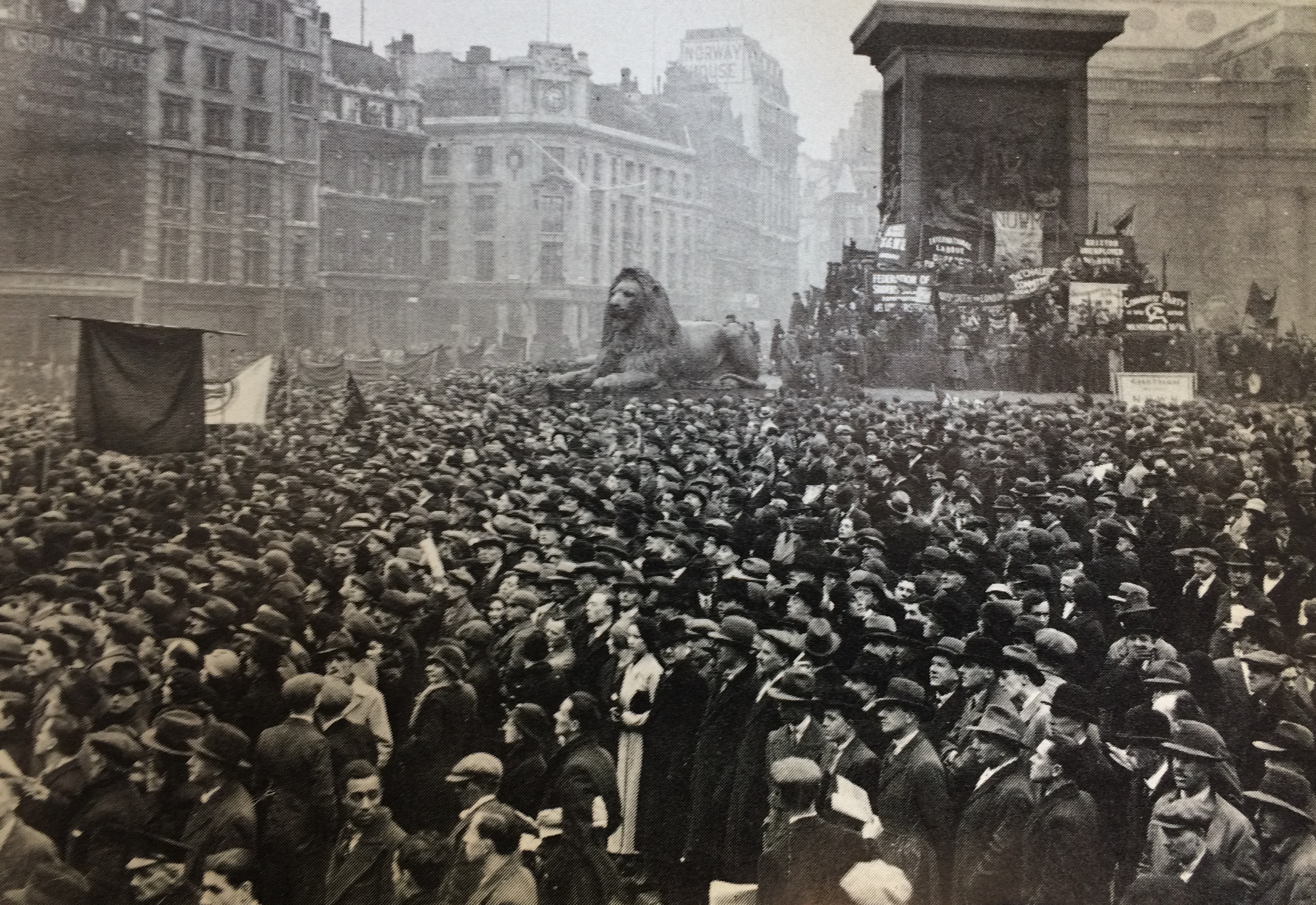
The land where Trafalgar square rests today has long been a politically charged forum for the "State" and "People" to voice their grievances and sometimes celebrate. Entering the 19th century, poor working conditions, urban and rural poverty, and middle class dissension took to the streets in increasingly organized fashion, finding trafalgar square a suitable place for, what was considered at the time,"riotous assembly". While much of rioting and outbreaks of public disorder became infrequent as the economy's upswing after 1850 saw a raised standard of living for the majority of the population, Trafalgar Square continued to serve as a place of meeting and a platform for public demonstration into the 20th century. Political unrest rose in London between 1887 and 1892 with an increased public focus on 'the Troubles', a political, nationalistic conflicted over the northern irelands sovereignty. The incident that came to be known as Bloody Sunday saw protests at Trafalgar Squared turn from hostile to violent police intervention. After such a unsightly event in the square, police oversight increased to assure civil order in and around Trafalgar Square.
At the turn of the 20th century, the square proved a ideal mass outdoor public meeting place to organize and demonstrate against inequality and injustice. Suffragettes took to the square seeking a forum to let their message be heard. In a period of twenty years following World War I, much of the demonstrations in Trafalgar Square reflected the two dominant issues that faced the Labour movement: unemployment, and the fight against fascism. Demonstration in Trafalgar square frequently met high tension from London police enforcement. Undeterred, campaigns for Nuclear disarmament, anti-war campaigns, and free speech protests pervaded the gatherings in Trafalgar square into the 21st century.[5] The Seventies saw Anti-Apartheid rallies and Gay and Lesbian Rights activism. Poll tax riots dominated the square in the Nineties. Calls and signs protesting against America's Second Iraq war displayed beneath Nelson's Column in 2003.
[6]
The Fourth Plinth

As time passed, pressure mounted for a depiction of some paragon in impossible to erect
pg. 125 on
[8]
The Fourth plinth project was initiated by Prue Leith, Director of the Royal Society of Arts (RSA) coming to fruition in 2005.
Sought to promote the site for a changing exhibition of contemporary, temporary artworks.
Initial line up of sculptures
Ecce Homo - Mark Wallinger
Regardless of History - Bill Woodrow
Monument - Rachel Whiteread
[9]
Ecce Homo
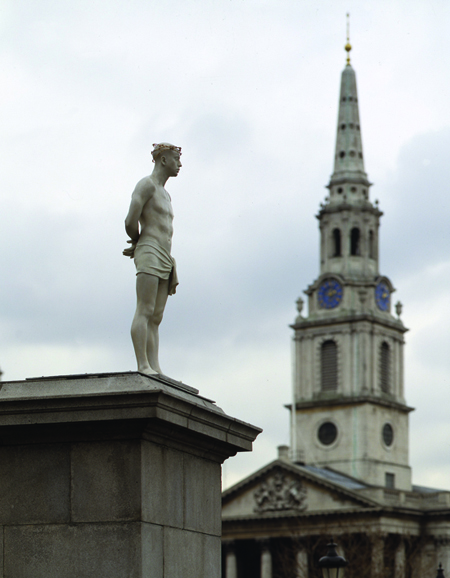
Penny Egan, Director of RSA why recent work to stimulate public about public art reveals the Society's strengths and core values
surprise at the lead the RSA taking on putting a series of contemporary sculptures on the empty plinth in Trafalgar Square. RSA confident in its ability to fill gaps and raise public debate.
Frail and diminutive figure of Ecce Homo by Mark Wallinger
RSA's reasons for intervening have been underplayed and misunderstood
The fact that [we] finally have an occupant on the empty plinth is significant in itself. Having stood empty for 150 years 'Will IV inconveniently died before subscriptions could be raised to fund his statue and because no one could decide on who should occupy it, Prue Leith, then Chairman of the RSA sought to break such an impasse. After 4 years of consultations and acquiring planning permissions, Leith established a program of three changing contemporary sculptures.
The Fourth Plinth project was intended to raise the debate about contemporary sculpture in public places.
Reactions to Ecce Homo, few grasp the artist's intention. Richard Dorment, art critic of the Daily Telegraph, "Disparity in scale between plinth and figure is, like the setting of Trafalgar Square, as important to the meaning of the work as the figure itself. In its exultation of humility, of suffering and of acceptance, it questions the values by which we live our lives. Instinctively we contrast this human-scaled Christ with the giant figures of Sir Charles Napier and General Havelock nearby. Admiral Nelson has been raised on his column so high above mortal men that he is almost invisible... Wallinger's Christ seems to rebuke a city that exalts [their lives].. To commission the first work in the series from one of the quirkiest figures in British art...took courage and imagination."
Reactions from critics range from 'Is it right for Trafalgar Square? The answer must be a resounding No. That square is a great secular pantheon celebrating Britain's imperial glories... Only people totally ignorant of the square's very definite theme could have chosen something so glaringly inappropriatte' - Sir Roy Strong, former director of the V&A Museum and National Portrait Gallery, to Richard Dorment
[11]
Alison Lapper Pregnant
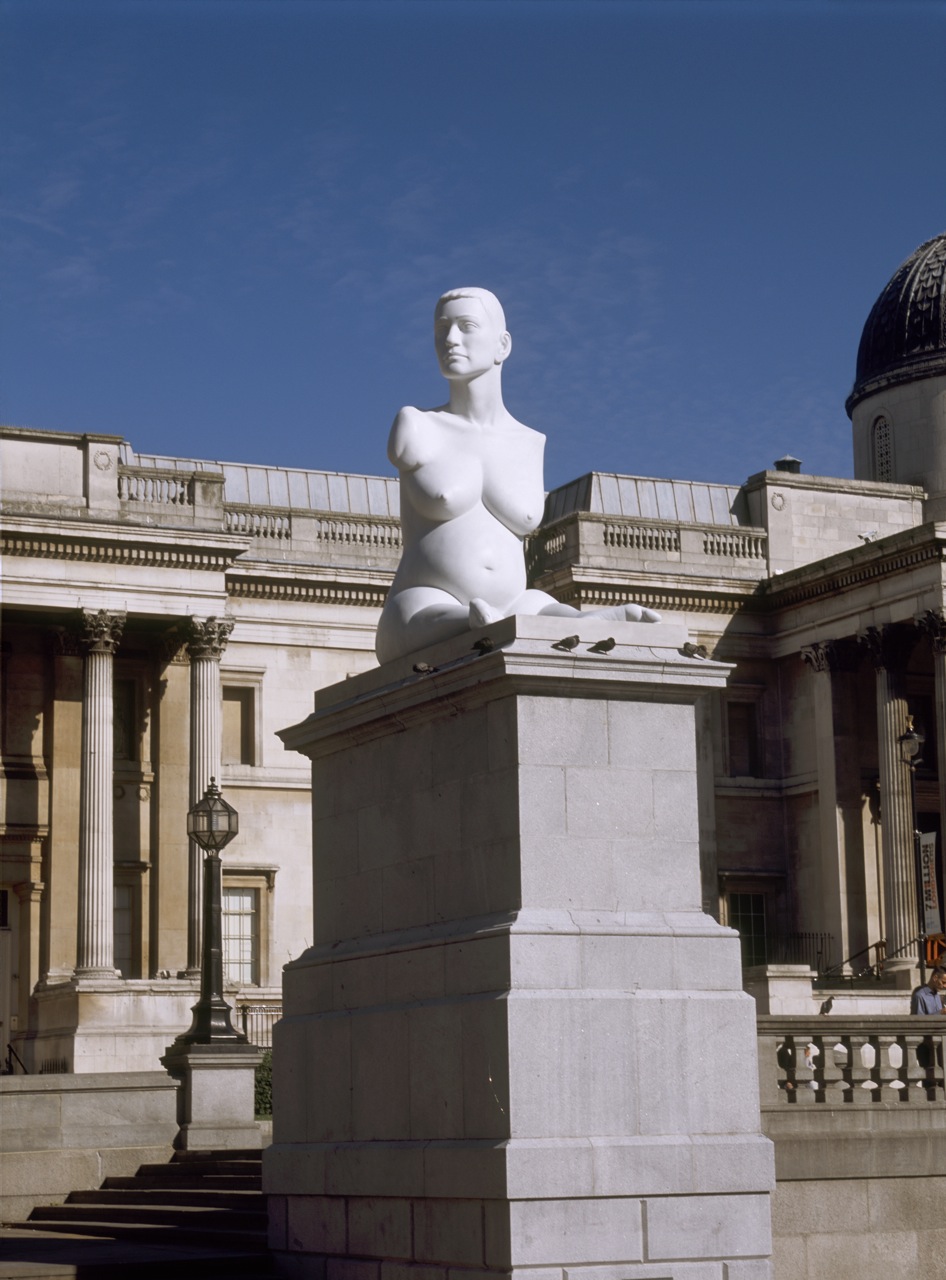
Art world divided by marble disabled nude, March 16, 2004 by Luke Leitch, Arts Reporter for the Evening Standard "Controversy was today raging over the art works that have finally been chosen to occupy the empty fourth plinth in Trafalgar Square." White marble, Marc Quinn, artist Alison Lapper eight months pregnant, 18 months, intended as a deliberate counterbalance to "the heavy presence of military images in statues across London"
Evening Standard's art critic Brian Sewell, "I dislike the Quinn intensely... It's a gloriously fudged decision and they better try and get it right next time."
Editor of art magazine The Jackdaw, David Lee, "Ghasty"
Editor of British Art Journal, Robin Simon, "Thankfully, these sculptures are not going to be around for ever."
Jay Jopling, White Cube Gallery which exhibited Quinn, "I don't see how anyone could find this work sensationalist. It's a major work of art, drawing on tradition and context, very rich and layered."
Bert Massie, Chairman of the Disability Rights Commission, "Congratulations to Marc for realizing that disabled bodies have a power and beauty rarely recognized in an age where youth and 'perfection' are idolized."
Evening Standard poll, suggested around 70 percent rejected all the proposed works.
Most would have preferred an iconic or historical figure to occupy the plinth.
Nairne commented on public response to commissions: "At the end of the day it was an artistic judgement."
[13]
Section 2: Deliverable
In this section, provide your contribution, creative element, assessment, or observation with regard to your background research. This could be a new derivative work based on previous research, or some parallel to other events. In this section, describe the relationship between your background review and your deliverable; make the connection between the two clear.
Subsection 1
...use as many subsections or main sections as you need to support the claims for why what you did related to your Background section...
Subsection 2
...and so on and so forth...
Fourth Plinth Chronological Gallery
Mark Wallinger's Ecce Homo [14]
Bill Woodrow's Regardless of History[15]
Rachel Whiteread's Monument[16]
Marc Quinn's Alison Lapper Pregnant [17]
Thomas Schütte's Hotel for the Birds[18]
Anthony Gormley's One and Other[19]
Yinka Shonibare's Nelson's Ship in a Bottle[20]
Michael Elmgreen and Ingar Dragset's Powerless Structures, fig. 101[21]
Katharina Fritsch's Hahn/Cock[22]
Hans Haacke's Gift-horse[23]
Conclusion
In this section, provide a summary or recap of your work, as well as potential areas of further inquiry (for yourself, future students, or other researchers).
References
- ↑ Hood, J. (2005). Trafalgar Square: A Visual History of London's Landmark Through Time. London: B T Batsford.
- ↑ Mace, R. (1976). Trafalgar Square: emblem of empire. London: Lawrence & Wishart.
- ↑ Gater, G. H., & Hiorns, F. R. (Eds.). (1940). St Martin-in-The-Fields, Pt III: Trafalgar Square and Neighbourhood (Vol. 20, Survey of London). London: London County Council.
- ↑ Hargreaves, R. (2005). Trafalgar Square: through the camera. London: National Portrait Gallery Publications.
- ↑ Mace, R. (1976). Trafalgar Square: emblem of empire. London: Lawrence & Wishart.
- ↑ Hargreaves, R. (2005). Trafalgar Square: through the camera. London: National Portrait Gallery Publications.
- ↑ L. (2017, March 27). The next artworks on the Fourth Plinth will be... Retrieved June 20, 2017, from https://www.london.gov.uk/what-we-do/arts-and-culture/art-and-design/next-artworks-fourth-plinth-will-be.
- ↑ Hood, J. (2005). Trafalgar Square: A Visual History of London's Landmark Through Time. London: B T Batsford.
- ↑ Hargreaves, R. (2005). Trafalgar Square: through the camera. London: National Portrait Gallery Publications.
- ↑ Ecce Homo - Mark Wallinger. (n.d.). Retrieved June 20, 2017, from https://www.stpauls.co.uk/eccehomo
- ↑ Egan, P. (1999). The Fourth Plinth. RSA Journal, 147(5490), 10-13. Retrieved June 20, 2017.
- ↑ Alison Lapper 20002012. (2012). Retrieved June 20, 2017, from http://marcquinn.com/artworks/alison-lapper
- ↑ Leitch, L. (2004, March 16). Art world divided by marble disabled nude. The London Evening Standard. Retrieved June 20, 2017.
- ↑ Ecce Homo - Mark Wallinger. (n.d.). Retrieved June 20, 2017, from https://www.stpauls.co.uk/eccehomo
- ↑ T. (2011, January 21). The Fourth Plinth. Retrieved June 20, 2017, from http://tentends.tumblr.com/post/2860296129/the-fourth-plinth
- ↑ (n.d.). Retrieved June 20, 2017, from http://www.fineart.ac.uk/works.php?imageid=bt0004
- ↑ Alison Lapper 20002012. (2012). Retrieved June 20, 2017, from http://marcquinn.com/artworks/alison-lapper
- ↑ Trafalgar Square's Fourth Plinth. (2009, February 26). Retrieved June 20, 2017, from http://www.telegraph.co.uk/culture/culturepicturegalleries/4838785/Trafalgar-Squares-Fourth-Plinth.html?image=4
- ↑ Image 16 | Anthony Gormley: One and Other | Pictures | Pics. (2009, July 06). Retrieved June 20, 2017, from https://www.express.co.uk/pictures/pics/598/Anthony-Gormley-One-and-Other/9559
- ↑ HMS Victory Returns to Trafalgar. (n.d.). Retrieved June 20, 2017, from http://www.yinkashonibarembe.com/press/past/hms-victory-returns-to-trafalgar
- ↑ Sooke, A. (2012, February 23). Elmgreen and Dragset's Fourth Plinth, review. Retrieved June 20, 2017, from http://www.telegraph.co.uk/culture/art/art-reviews/9101444/Elmgreen-and-Dragsets-Fourth-Plinth-review.html
- ↑ Sooke, A. (2012, February 23). Mailonline, A. R. (2016, September 29). Now there are two phallic symbols in Trafalgar Square!': Hand with a giant thumbs-up sculpture designed to represent 'positivity' is unveiled on the fourth plinth... but not everyone is impressed. Retrieved June 20, 2017, from http://www.dailymail.co.uk/news/article-3813890/Now-s-two-phallic-symbols-Trafalgar-Square-Hand-giant-thumbs-sculpture-designed-represent-positivity-unveiled-fourth-plinth-not-Londoners-impressed.html
- ↑ Gift Horse by Hans Haacke on the Fourth Plinth, London. (2015, March 06). Retrieved June 20, 2017, from http://www.urdesignmag.com/art/2015/03/06/gift-horse-by-hans-haacke-on-the-fourth-plinth-london/
External Links
If appropriate, add an external links section
Image Gallery
If appropriate, add an image gallery

